OCEAN HILL VS. OCEAN HILL
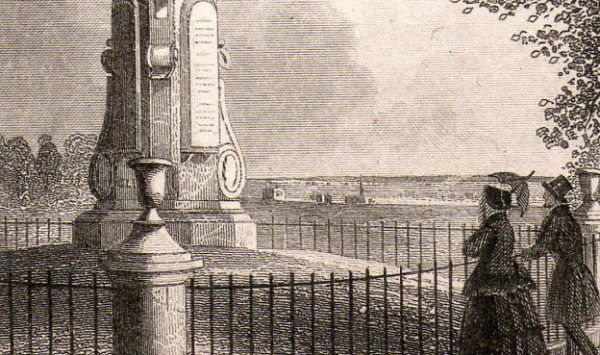
******************************************************************************************************************************** Brownstone Detectives investigates the history of our clients’ homes. The story you are about to read was composed from research conducted in the course of one of those investigations. Do you know the history of YOUR house? ******************************************************************************************************************************** Before there was Ocean Hill, there was…Ocean Hill…. Researching the history of this Brooklyn moniker, though, points you in the direction of two very different places with two very different histories. There is the original Ocean Hill in Green-Wood Cemetery, a geographic location used famously by George Washington during the American Revolution. And then, there is the Ocean Hill in the eastern section of Bedford-Stuyvesant, created by developers in 1860s Bushwick. The only characteristic the two places have had in common – other than the name – was a view of the ocean from their perches. But, now, even that is gone for one of them. OCEAN HILL – GREEN-WOOD CEMETERY Ocean Hill in Brooklyn’s City of the Dead, Green-Wood Cemetery, is likely as old as the cemetery itself, which dates from 1838. While it was not likely known as such during the American Revolution, the high vantage point was used by George Washington before the Battle of Brooklyn to observe the British forces, which were gathering to the south (and which would subsequently drive him out of New York). Ocean Hill according to Green-Wood Illustrated (issue 1), “is one of the most elevated spots in the Cemetery,” and “it occupies the north-eastern corner of the grounds.” “The sea itself,” the […]
REDEMPTION COMES FOR A BOY FIREBUG (1913)
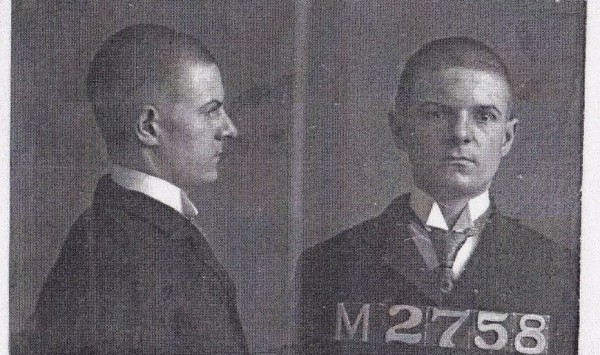
******************************************************************************************************************************** Brownstone Detectives investigates the history of our clients’ homes. The story you are about to read was composed from research conducted in the course of one of those investigations. Do you know the history of YOUR house? ******************************************************************************************************************************** (Ed.’s Note: A few weeks ago we received a letter from out of the blue. The writer claimed something fantastic – something astounding. It was a coincidence that spawned a story which gave life to an incredible – but true – tale. A story that we had written in a Brownstone Detectives blog several months earlier had recently popped up in this gentleman’s Google search about his great-grandfather. His great-grandfather, though, was no ordinary Brooklynite. For months in 1899 he had set fires in the houses – and fear in the hearts – of the Brooklynites of the Eastern District. He had also set the city to talk about, theorize on, and fabricate what had been causing the fires and where they would blaze next. The story you will read lays out the very particulars and the characters involved in the case. It is written by a particularly credible and relevant source of the information, information that was uncovered through some keen and dedicated detective work. For the gumshoe detective work behind this piece of crime investigation was performed by a man who only last year came to learn of this fantastic and amazing tale – fantastic because it was about his family, and amazing because no one in his family […]
THE CAT LADY OF BUSHWICK (1915)
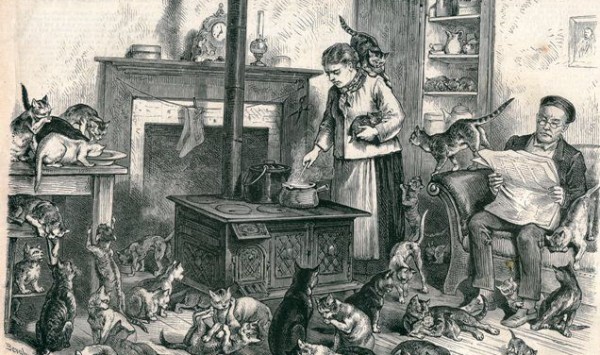
******************************************************************************************************************************** Brownstone Detectives investigates the history of our clients’ homes. The story you are about to read was composed from research conducted in the course of one of those investigations. Do you know the history of YOUR house? ******************************************************************************************************************************** There is an old wives’ tale which tells us that cats steal the breath of humans. They lie in wait until the human is deeply asleep before climbing upon the victim’s chest, leaning down closely to the mouth, and then slowly sucking the air out from the lungs of their victim. When the next morning, a dead body is discovered, no visible suspects are to be found. On a morning in January of 1915, at 1355 Dekalb Avenue, a night watchman by the name of William Heuermann, was returning home after a night’s work. Upon opening his bedroom door, and discovering his dead wife – he found plenty of suspects – 47 to be exact. THE CAT LADY OF DEKALB Angelina Heuermann was crazy about cats. Some would say that she was just plain crazy. She was always “collecting them off the streets,” her fondness for the felines “frequently causing them to be dispossessed from houses where the presence of weird animals was undesirable.” The neighbors knew about her quirk, but they chalked it up back then to an oddity rather than a sickness. The number of cats that lived in and about the house, though, had grown suspiciously large of late, causing the neighbors to gossip amongst themselves regarding what […]
THREE MEN AND A PIG (1892)
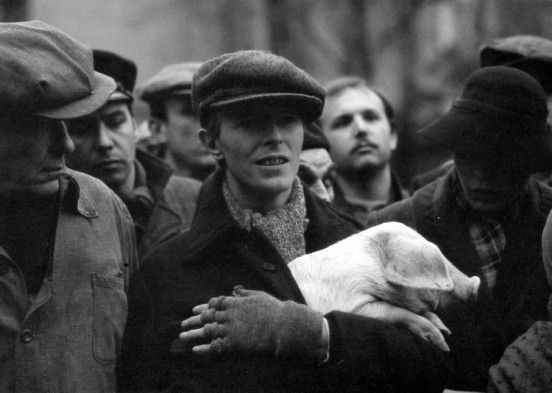
******************************************************************************************************************************** Brownstone Detectives investigates the history of our clients’ homes. The story you are about to read was composed from research conducted in the course of one of those investigations. Do you know the history of YOUR house? ******************************************************************************************************************************** (The setting of our story: The Eastern District of Brooklyn back in 1892 was a far more rural place that it is today. Comprised primarily of Williamsburg, Bushwick, and, parts of Stuyvesant Heights, the “E.D.,” as it was then called, was a semi-residential district filled with many small farmers living in frame houses and shanties, all of whom seemed to be living on the very edge of the world.) “Three men and a live, squeaking pig passed through Union avenue this morning.” The pig in the story “was an involuntary member of the quartet.” He was in the process of being stolen. “…(H)is shrill protests were heard by Policeman Farrington of the Nineteenth precinct, who traced the cries to the source. A man whom the policeman recognized as Thomas Farmer, Jr., of Union avenue and Frost street, was carrying a bag over his shoulder. “Farrington,” the story noted “gave chase and caught Farmer, who dropped the imprisoned pig on the sidewalk and showed flight. So desperate was his resistance that the officer was compelled to draw his club and a fierce fight of a few minutes’ duration terminated in the complete subjugation of Farmer.” Apparently, the two companions of the aptly named Farmer had fled. But they would not be gone […]
A BROOKLYN FIREBUG’S REIGN OF FURY (1899)
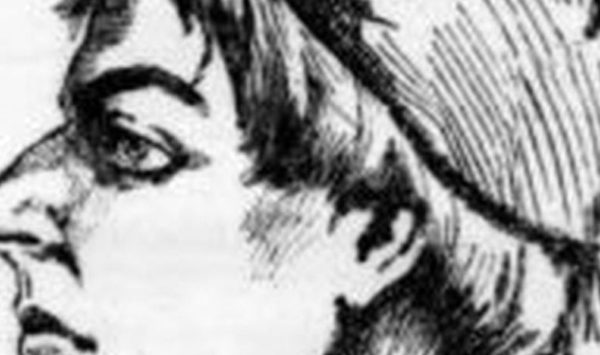
In February and March of 1899, someone was setting fires in crowded tenement houses in the eastern section of Stuyvesant Heights and Williamsburg. They started around the time that the Fire Department had classed the neighborhood of Broadway and Gates Avenue as “highly flammable.” In little more than a month, 14 suspicious fires were reported and, subsequently, doused by the department. The Brooklyn public was both fascinated and horrified by the story. Brooklynites began to watch their houses more closely and found themselves more discriminating regarding people on their street whom they did not know. Firebugs were not an unknown quantity, but this one was putting a good number of fires under his belt and fear into the heart of Brooklyn. DETECTIVE BECKER ON THE CASE! When Brooklyn Police tried to wrap their heads around the spate of arsons, wondering who could possibly be starting them and why, Detective Becker recalled a strange incident where a young Abraham & Straus delivery boy had, one day, bound and gagged himself and pretended to have been knocked unconscious by 12 thieves and had his weekly wages stolen. The boy had eventually admitted his act, but would not say why he had done it. As Brooklyn Police had nothing else really to go on, Capt. Ennis of the Ralph Avenue station detailed Becker to watch the youngster, Irving Taylor, Jr., to determine if he were somehow involved. Detective Becker knew that the 15-year-old was a smoker. He consumed eight to ten packs daily. […]
THE DIRTY, JERKY, FOUL “L” TRAIN (1892)
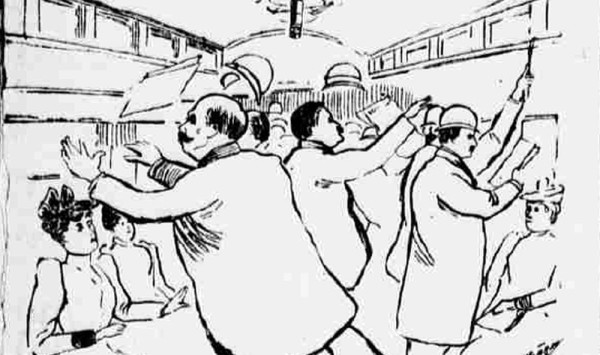
******************************************************************************************************************************** Brownstone Detectives investigates the history of our clients’ homes. The story you are about to read was composed from research conducted in the course of one of those investigations. Do you know the history of YOUR house? ********************************************************************************************************************************In 1892, the “L” Train was killing Brooklynites. At least that’s the impression you would have gotten if you were to read Joseph Pulitzer’s New York World in the early 1890s. The campaign that the newspaper developed to improve elevated service would have had you believe that the elevated train (the “L”) – which delivered passengers from the Brooklyn Bridge to their homes throughout the borough (and vice versa) – was just as liable to kill you as to get you safely home. If you had spoken to an “L” Train rider back then, too, you would have had further proof that all of this was true. Today, while the mode of travel and the specifics thereof, at their base, are different from those which we have at our disposal, many straphangers’ complaints concerning the slowness of the subway, the dirtiness of the cars and stations, and the lack of train cars, ring as true today as they did 125 years ago. Which begs the question, “Has anything really changed?” Here follows some of the prize-winning….ahem…..yellow journalism illustrations that may better illustrate the problems existent in 1892. “The crowding and pushing that you have witnessed to-night could be avoided if the Company would only put on more trains,” stated one rider. “I […]
WONG SING BOW’S WHITE WIFE MINNIE (1877)
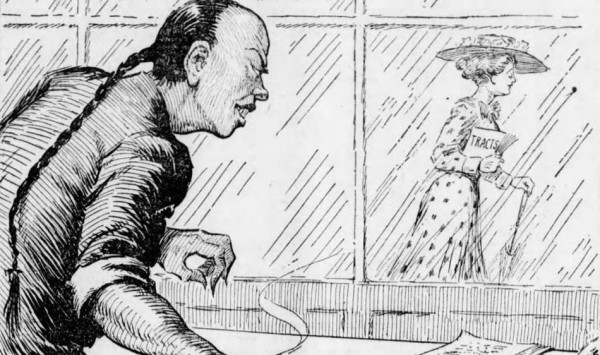
******************************************************************************************************************************** Brownstone Detectives investigates the history of our clients’ homes. The story you are about to read was composed from research conducted in the course of one of those investigations. Do you know the history of YOUR house? ******************************************************************************************************************************** In 1886, the life that Wong Sing Bow had been building up for years began to crumble before his eyes. A naturalized U.S. citizen, Wong Sing had been born “a subject of the emperor of China.” But he had been in America “long enough to save considerable money and to appreciate the beauty of Irish girls,” said one paper of the time. Wong Sing spoke English fluently and was often called upon by the authorities to interpret. With all that Wong Sing had going for him, it had originally seemed likely that he was going to have a good life. But this was the 1800s. And Wong Sing was Chinese. ANTI-CHINESE PREJUDICE IN 19TH CENTURY BROOKLYN After Wong Sing’s arrival in the U.S. around 1870, according to one paper, “the celestial youth immediately fitted himself in the groove of circumstances. “He decided to become intensely American. He shaved his cue off, doffed his Chinese garb, proclaimed his intention to become a citizen, and went to Sunday school ‘all samme like Melican man.’” Apparently, the papers, like most Americans, had no politically correct bent in those days. But the Chinese were located squarely at the bottom of the social construct – just slightly beneath the Irish and the Germans – and so […]
REMEMBERING BROOKLYN’S UNDEAD (1922)
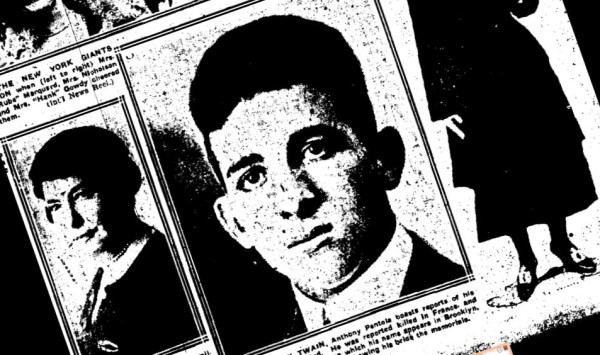
“Reports of my death have been greatly exaggerated.” So reflected Mark Twain to a reporter with William Randolph Hearst’s New York Journal in 1897, after the New York Herald had incorrectly reported that the famous writer had passed away while in London. While journalists are taught from their very first story to “trust but verify,” the U.S. military, though, has never fostered suffering compunction from such mistakes made. So it was when reports were being dispatched back to the U.S. during the First World War. While the adjutants of these military units, whence the reports originated, were doing their best to keep track of deaths and injuries, it can be imagined that quite a few names were inadvertently added to one or the other of the lists. After the Great War, accounts of American soldiers often surfaced, of their having previously been added to the list of the war dead, and then having shown up quite healthy – and with plans to continue living for many years to come. Such was the case with one Brooklyn man, Anthony Pentola, who, upon returning to the U.S. after fighting in the Great War, learned that not only had he been reported amongst the war dead, but that, he subsequently realized, his greatest and most substantial proof against the correctness of this report – his appearance one day in the War Department – was woefully insufficient in reversing the departments’s bureaucratic march toward its repeated lionization of him as an American patriot for […]
